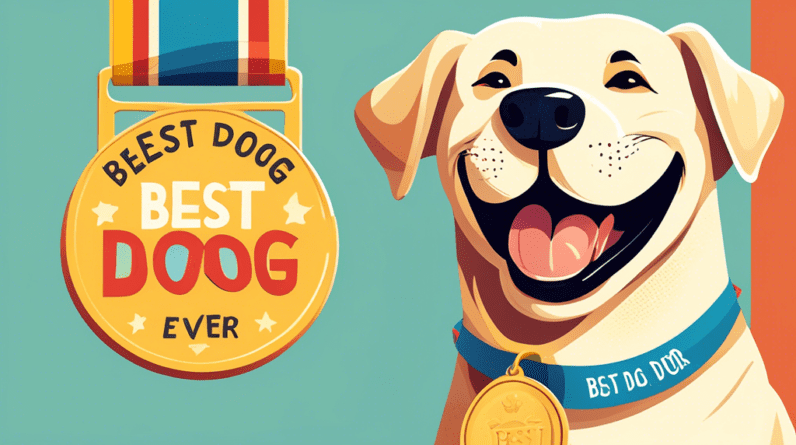
Do Labradors Need a Coat in Winter? Keeping Your Pup Cozy
Understanding Your Labrador’s Natural Insulation
Labrador Retrievers, those exuberant bundles of fur, are renowned for their love of the great outdoors. But when the mercury dips and winter paints the landscape with frost, a common question arises among Labrador owners: Does my furry friend need a coat?
To answer this, we first need to understand the Labrador’s natural insulation. Bred for retrieving game in chilly waters, Labradors boast a double coat, a feature that equips them to handle colder temperatures.
Here’s a breakdown of their remarkable fur:
- The Outer Coat: This layer acts as a water-repellent shield, guarding against rain, snow, and icy winds. The coarser texture helps prevent moisture from reaching the undercoat, keeping your Labrador dry.
- The Undercoat: This dense, fluffy layer is the secret to their warmth. Like a natural down jacket, it traps air close to the body, providing insulation against the cold.
This double-layered coat means that most Labradors are surprisingly well-equipped for winter chills. However, there are other factors to consider before deciding if your Labrador needs that extra layer of warmth.
Factors Influencing Your Labrador’s Winter Wardrobe Needs
While their double coat provides a good degree of protection, not all Labradors are created equal when it comes to cold tolerance. Several factors come into play:
1. Age and Health
Puppies, senior dogs, and those with underlying health conditions are more vulnerable to the cold. Their bodies may not regulate temperature as effectively, making them more susceptible to chills. If your Labrador falls into one of these categories, a coat can provide crucial warmth and comfort.
2. Climate and Environment
A Labrador in a mild winter climate might only need their natural coat for most outings. However, if you live in an area with harsh winters, sub-zero temperatures, or prolonged exposure to snow and ice, a coat can make a world of difference in keeping your pup warm and comfortable.
3. Activity Level
A Labrador bounding through the snow, playing fetch, or engaging in vigorous exercise will generate body heat to stay warm. However, if your dog prefers leisurely strolls or tends to get cold easily, a coat can provide that extra bit of warmth, especially during longer outings.
4. Coat Condition and Color
Believe it or not, coat color can play a role! Darker coats tend to absorb more heat from the sun, potentially providing a slight advantage in colder temperatures. Additionally, a Labrador with a thinner coat due to genetics or health conditions might benefit from the added warmth of a coat.
Signs Your Labrador Might Need a Coat
Labradors are masters at living in the moment, but they can’t always tell us when they’re cold. Here are some signs to watch out for:
- Shivering: This is a clear indication that your Labrador is trying to generate body heat. It’s their way of saying, Brrr, it’s chilly!
- Lifting Paws: If your Labrador is frequently lifting their paws off the ground or trying to tuck them under their body, they’re trying to conserve heat.
- Reluctance to Move: If your normally playful pup seems reluctant to go outside, walk, or engage in their usual activities, the cold might be deterring them.
- Whining or Seeking Shelter: These can be subtle signs that your Labrador is uncomfortable in the cold and seeking warmth and comfort.
Choosing the Right Coat for Your Labrador
If you’ve determined that your Labrador could benefit from a winter coat, the next step is selecting the right one. Here’s what to look for:
1. Fit and Comfort
A well-fitting coat should provide warmth without restricting movement. Look for adjustable straps or closures to ensure a snug but comfortable fit. Avoid coats that are too tight or too loose, as they can interfere with movement or provide inadequate insulation.
2. Water Resistance
Given the Labrador’s love for splashing in puddles or frolicking in the snow, a water-resistant or waterproof outer layer is essential. This will help keep the undercoat dry, ensuring your Labrador stays warm even during damp adventures.
3. Breathability
While keeping your Labrador warm is crucial, breathability is equally important. Opt for coats made from breathable materials to prevent overheating, especially during more active outings. Look for features like mesh linings or ventilation panels.
4. Visibility
Winter days often mean shorter daylight hours. Choosing a coat with reflective elements or bright colors enhances visibility during walks or playtime, keeping your Labrador safe during low-light conditions.
A Word on Indoor Comfort
While a coat might be necessary for outdoor adventures, remember that your Labrador’s double coat will likely keep them warm enough indoors. Overdressing them inside can lead to overheating and discomfort.
Instead of a coat indoors, consider providing a cozy bed in a draft-free area. This will give your Labrador a warm and comfortable place to relax after their outdoor excursions.
Listen to Your Labrador
Ultimately, the best guide for whether your Labrador needs a coat is your dog themselves. Pay close attention to their behavior and body language. If they seem cold, a coat can significantly enhance their comfort and enjoyment of winter weather.
By understanding your Labrador’s individual needs and considering the factors discussed above, you can make informed decisions to keep your furry friend happy, healthy, and warm throughout the winter months. After all, a cozy Labrador is a happy Labrador, ready to embrace all the joys that winter has to offer!






